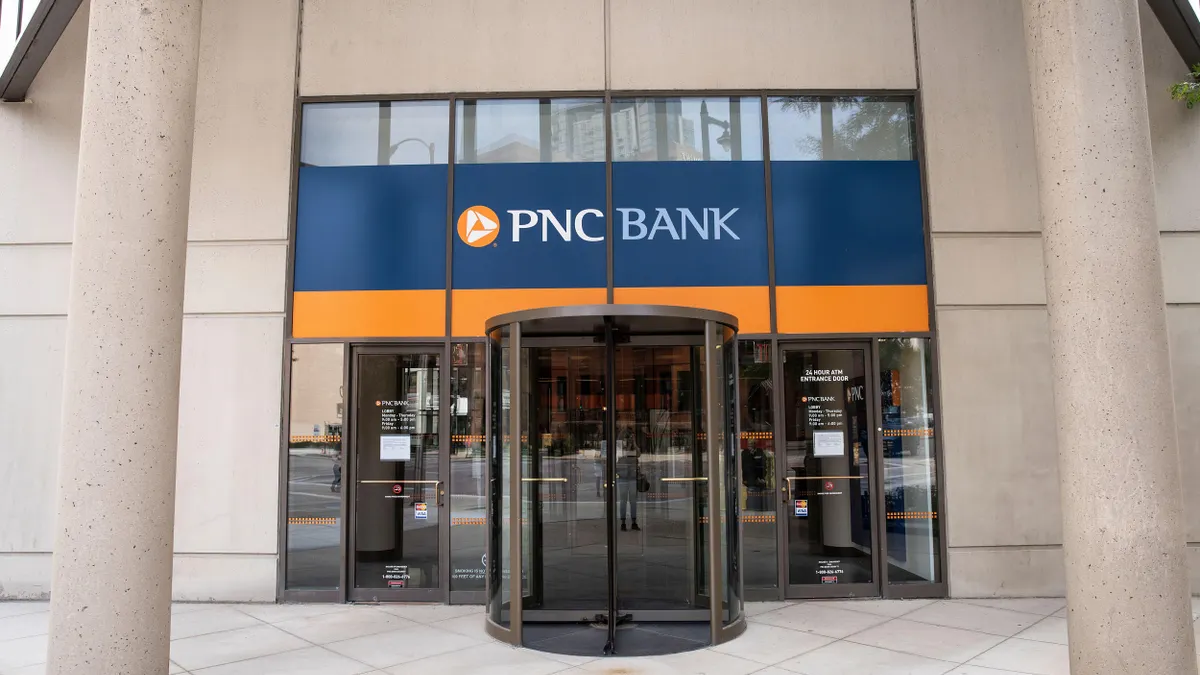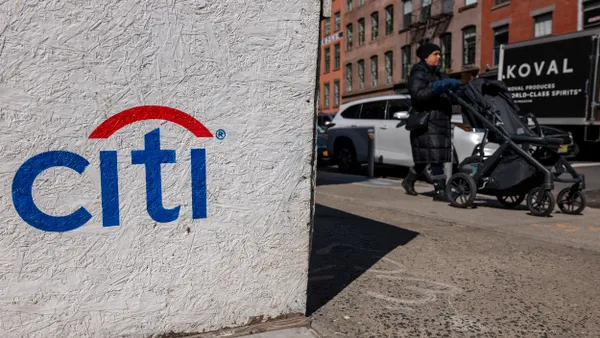Dive Brief:
- Deposits at banks with $250 billion or more in assets increased by 4.4%, to $6.9 trillion in the 12 months that ended June 30, according to Federal Deposit Insurance Corp. (FDIC) data. That’s more than five times faster than the 0.8% by which that category of banks was growing a year ago.
- In the same time frame, deposits fell by 12.3% — more than twice the rate of last year's 5.4% decline — at banks with less than $100 million in assets, to $53.9 billion.
- Meanwhile, despite receiving lower marks on reputation and the perception of being customer-driven in comparison to regional or midsize banks, big banks rate higher in customer satisfaction among the under-40 crowd, according to a recent survey by J.D. Power that was emailed to Banking Dive.
Dive Insight:
Big banks' reputations have suffered some bruises since the 2007-08 recession, but perception may be turning around.
Global systemically important banks such as JPMorgan Chase and Citi "have become more resilient in recent years, thanks to a build-up in capital buffers and a shift to more stable sources of funding," according to a quarterly review published Sunday by the Bank for International Settlements.
Deposits are among those stable sources. And, regardless of institution size, bank deposits across the financial sector hit all-time highs in three of the four weeks following the Federal Reserve's July 31 rate cut, according to American Banker. Indeed, net income has even risen at community banks by 8.1%, to $6.9 billion, according to the FDIC.
Big banks' reach and relatively quick adoption of technology may be helping them to sway millennial customers, according to the J.D. Power survey. The nation's six largest banks scored 812 points on a 1,000-point scale for overall satisfaction, 821 points for convenience and 842 for self-service, which takes into account mobile and online banking, ATM availability and innovation.
By comparison, midsize banks — the term J.D. Power used for institutions with between $2 billion and $55 billion in deposits and at least 30 branches — scored 808 points overall, 815 points for convenience and 823 points for self-service. Regional banks, including SunTrust, BB&T, Fifth Third and Capital One, scored 807, 808 and 833 points respectively in those respective categories.
Customers over 40 grew increasingly satisfied with smaller institutions: Midsize banks scored 827 points for overall satisfaction in the age group, compared with 811 for regionals and 801 for big banks. Customers over 40 preferred midsize banks' convenience, as well — by a score of 842 points, compared with 827 for regionals and 825 for the six largest. For self-service, midsize banks earned 845 points, compared with 840 for regionals and 837 for the biggest banks.
"There's a clear warning when you look at the difference in satisfaction for customers under 40 versus over 40," Bob Neuhaus, J.D. Power's vice president of global financial services, told American Banker. "If I was a midsize bank, I would be very concerned about my ability to catch up and compete on that level. It's going to have an impact on revenue and cost structure and the fundamental existence of the bank."
Midsize banks did score highest for personal service across the board — at 873 points for customers over 40 and 840 for younger customers.
Big banks made those gains despite scoring lowest in reputation among customers surveyed by J.D. Power. Big banks rated a 5.5 on a seven-point scale, while regionals scored a 6.0, and midsize banks 6.1.










